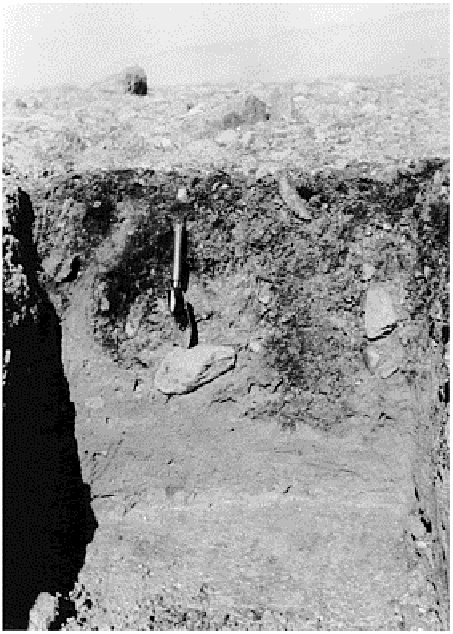Environmental Engineering Reference
In-Depth Information
give shallow, stony, coarse-textured soils. Soft rocks give deep, less stony, loamy soils.
Where rocks are base-deficient it is common to have acid or podzolized soils. The clay
mineralogy affects the potential for shrinking and swelling and the composition of the
cation exchange complex.
Relief and the slope profile influence hydrology and soil water regime. On undulating
ground with slowly permeable parent materials, surface waterlogging causes gleying on
flat ground, but soils on slopes are dryer, as most rainwater runs off the surface or
through upper horizons to lower ground. Gleying reappears in valleys and basins where
run-off and through-flow concentrate. The distribution of soils is shown in Figure
19.4(a). In
Plate 19.2
An arctic brown soil (FAO: Gelic Cambisol) with
the top of the permafrost at the base of the soil pit. Mixing by
frost action (cryoturbation) in the active layer moves black
tongues of organic material into the subsoil. Profile depth 75
cm.
Photo: Ken Atkinson.

